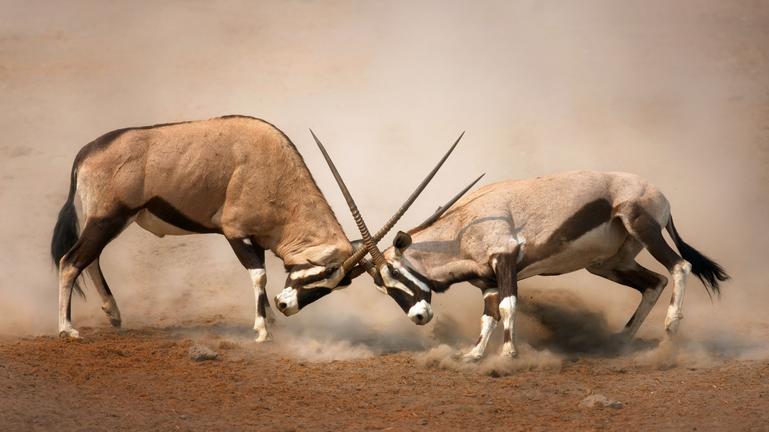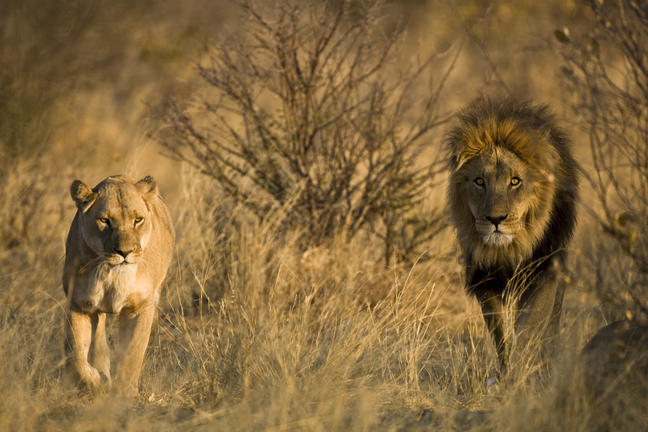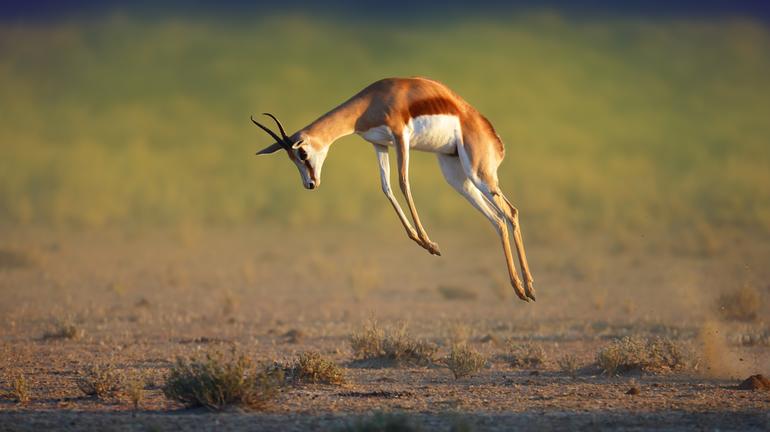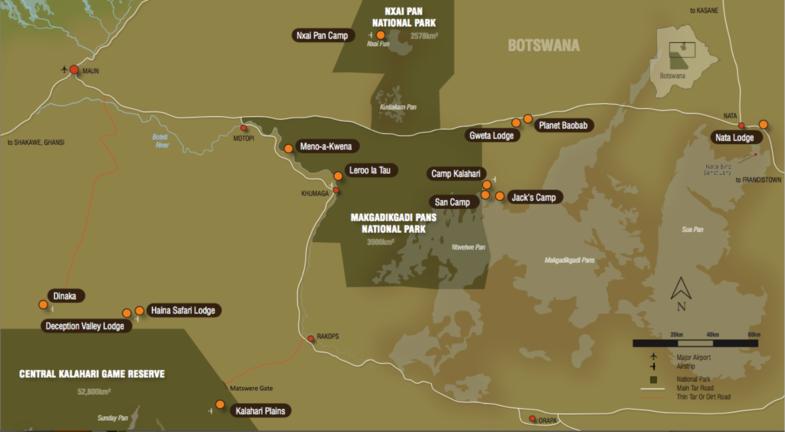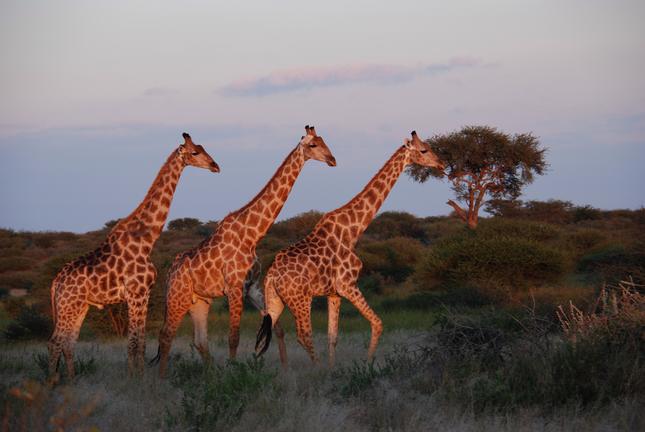HABITATS
The Kalahari is characterised by vast, open spaces, endless horizons and golden grasslands. This is not a stereotypical desert of lofty sand dunes, but rather a scrub-covered landscape covered with open pans and waist-high grasses. During the winter months, the traditional greys and yellows of the Kalahari landscape dominate. During the summer rains the Kalahari is at its most beautiful, boasting a blanket of wild flowers.
SEASONALITY
A few months after the summer rains start (approx. January – April), the Central Kalahari is transformed into a thriving paradise teeming with springbok and gemsbok, closely followed by hungry predators. The Kalahari is at its most vibrant following the rains, boasting incredible sunsets, with many of the desert species dropping their young at this time of year. During the winter months, the larger herds disperse into smaller groups as they spread out in the desert seeking out grazing or browsing.
SIGHTINGS
The Central Kalahari is home to numerous unique desert dwelling species, each with their own remarkable adaptations to survive the parched landscape. Herds of oryx and springbok make up much of the wildlife here with smaller groups of red hartebeest, eland, blue wildebeest, southern giraffe and greater kudu also contributing to the population of plains game. Predators include lion, leopard, cheetah, brown hyena, caracal, African wildcat, black-backed jackal, bat-eared fox and Cape fox. Game viewing in the Central Kalahari is best during the later months of the green season (January – April) when many animals drop their young and the interaction between predator and prey increases dramatically.
